NAVAL
AUXILIARY ENSIGNS &
PENNANTS 1720-1804
|
During most of the
eighteenth century, auxiliary vessels of the Russian Navy
(transports, supply ships, etc.) flew the white-blue-red
national flag as an ensign together with the naval jack. Armed
auxiliary vessels also hoisted the white masthead pennant.
|
|
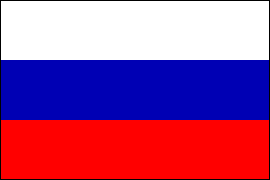
ENSIGN |
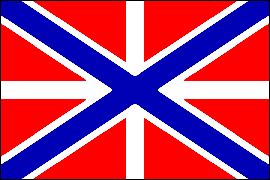
JACK |
|

MASTHEAD
PENNANT FOR ARMED NAVAL AUXILIARIES |
|
NAVAL
AUXILIARY ENSIGNS
1804-1917
|
In 1804 a distinctive ensign was introduced for auxiliary
vessels of the Baltic Fleet: blue with the Russian tricolor in
the canton over white crossed anchors. Later there were three
such ensigns, colored to match those of the fleet's three
divisions. They were abolished along with the squadron ensigns
in 1865, when the Andrew Flag was made the sole Russian naval
ensign. Two new naval auxiliary ensigns were introduced in their
place: blue with the Andrew Flag as a canton for auxiliaries
commanded by naval officers and blue with the tricolor as a
canton for auxiliary vessels commanded by merchant marine
officers. The naval jack and (for armed auxiliaries) the masthead
pennant continued to be flown with these ensigns. Up to 1865,
the color of the pennant, if displayed, matched the color of the
ensign. Thereafter, the white pennant alone was used.
|
|
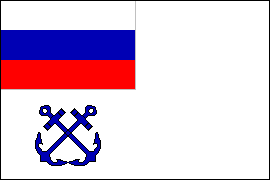
AUXILIARY VESSELS •
FIRST DIVISION |
|
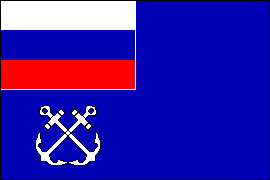
AUXILIARY VESSELS
• SECOND DIVISION |
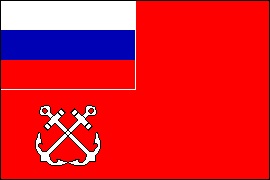
AUXILIARY VESSELS
• THIRD DIVISION |
|
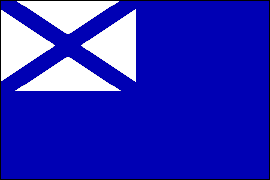
AUXILIARY VESSEL
•
1865-1917
NAVAL OFFICER IN
COMMAND |
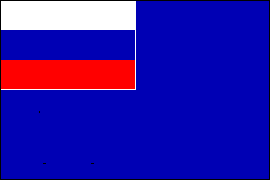
AUXILIARY VESSEL
•
1865-1917
MERCHANT MARINE OFFICER IN COMMAND |
|
AUXILIARY VESSELS
OF NAVAL FORTRESSES • 1913-17
|
In 1913, special ensigns with crossed cannons below the
canton were introduced for naval auxiliary vessels
attached to naval fortresses. Vessels commanded by a
commissioned officer flew the ensign with the Andrew
Flag in the canton, while those commanded by warrant
officers flew the ensign with the tricolor in the
canton.
|
|
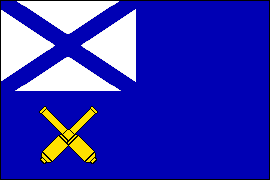
COMMISSIONED OFFICER IN
COMMAND |
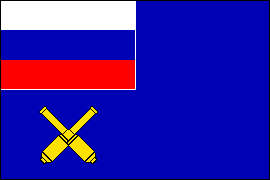
WARRANT OFFICER IN COMMAND |
|
NAVAL
AVIATION ENSIGNS
|
The first ensign for
naval air stations had the jack as a canton
and the naval aviation badge, a winged anchor, in
the fly. In 1917 the canton was changed to the naval
ensign.
|
|
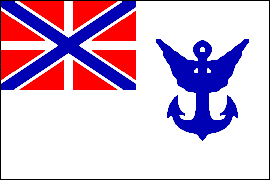
FIRST PATTERN
• 1906
|

SECOND PATTERN
• 1917
|











